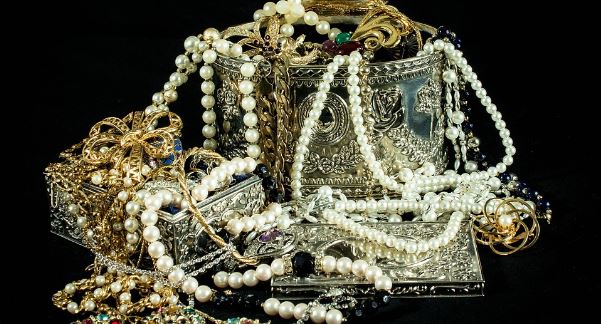Jewelry is more than just an accessory – it has a long and rich history that dates back thousands of years. It has been used to signify wealth, power, status, and even religious beliefs. Jewelry can also be a reflection of personal style or taste.
Whether you’re looking for something classic or modern, there are plenty of interesting facts about jewelry worth exploring! So, let’s take a look at six interesting things to know about jewelry.

Symbolism
Jewelry isn’t just about looking good – it can also be a symbol of something far more meaningful. For many centuries, jewelry has been used to commemorate important milestones such as weddings and anniversaries, or to express emotions such as love and friendship. Different pieces of jewelry may even have religious or cultural significance, like the Jewish Star of David or the Hindu Om symbol.
However, some pieces of jewelry have deeper meanings that go beyond their outward appearance. According to alldiamond, diamond rings were once a symbol of eternal love during the Victorian era. Additionally, pearls were seen as a sign of purity and innocence.
Different Materials
Jewelry comes in a variety of materials, including precious metals such as gold and silver, semi-precious stones like turquoise and lapis lazuli, glass beads, crystals, wood, shells, and more. Each material has unique characteristics that make it special. For example, gold is malleable and can be molded into any shape while silver is strong and durable.
The type of material used in jewelry is usually a reflection of its intended purpose or the maker’s personal preference. A ring made of gold may be intended as an engagement ring while a necklace made of turquoise could simply reflect someone’s love for the color.
Design and Shape
Jewelry isn’t just made of different materials – it can also come in a variety of shapes and designs. From intricate filigree details to simple bands, there are endless possibilities when it comes to creating beautiful pieces of jewelry.
Jewelry also has its unique language, with certain shapes and designs representing different messages or symbols. For example, a heart-shaped pendant could signify love while a hamsa hand may symbolize protection.
On the other hand, some jewelry designs are simply meant to be aesthetically pleasing. A delicate bracelet or a pair of earrings with intricate details can add a touch of sophistication to any outfit.
Care and Maintenance
Jewelry isn’t just about buying the perfect piece – it’s also important to take good care of it once you have it. To ensure that your jewelry remains in top condition, it’s important to keep it clean and store it properly.
For precious metals such as gold or silver, mild soap and water are usually enough to keep them clean. You should also avoid exposing your jewelry to harsh chemicals like hairspray or perfume. For more delicate materials, it’s best to get them professionally cleaned.
Finally, storing your jewelry properly is essential for preserving its condition. Storing jewelry in a soft pouch or box is ideal, as long as the pieces don’t rub against each other and cause scratches.
Jewelry Appraisals
It can be difficult to determine the value of jewelry, especially if you’re not an expert. That’s why it’s important to get your pieces appraised by a professional jeweler or gemologist.
An appraisal will provide you with information such as the type and quality of the materials used, their current condition, and their likely market value. This can be especially useful if you plan on reselling the jewelry or using it as collateral for a loan.
However, make sure to do your research and compare different appraisers before settling on one.
History
Jewelry has been part of human culture for centuries, with some pieces dating back to ancient times. Ancient Egyptians were known for their elaborate gold jewelry and their use of semi-precious stones like lapis lazuli.
In the Middle Ages, jewelry was primarily used as a sign of wealth and power, with more intricate designs being reserved for the higher classes. Meanwhile, in Renaissance Italy, fine metalwork and detailed stone settings were all the rage.
Modern jewelry has seen an even greater variety of materials and styles as artisans take inspiration from different cultures and periods of history to create unique pieces.

Jewelry is an incredibly versatile form of art, with designs ranging from simple bands to intricately detailed pieces. Whether you’re looking for a piece to symbolize love, wealth, or just a personal style statement, there’s something out there for everyone.
And by understanding the materials used in jewelry, its design language, and ways to properly care for it, you can make sure that your jewelry remains beautiful for many years to come.






